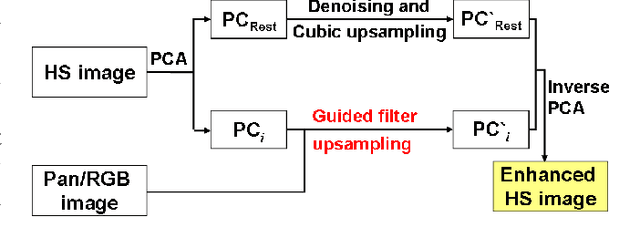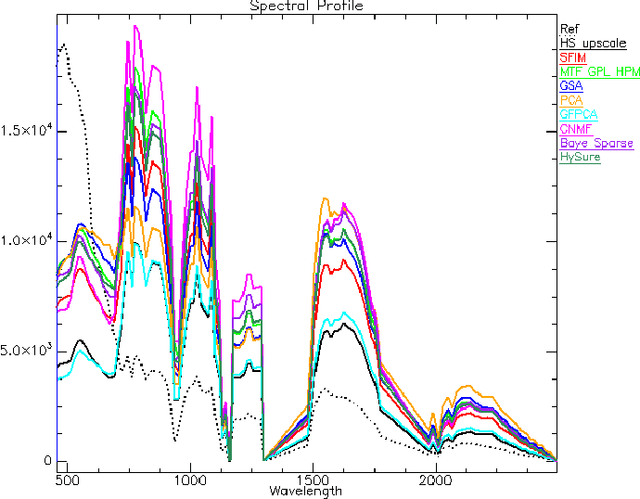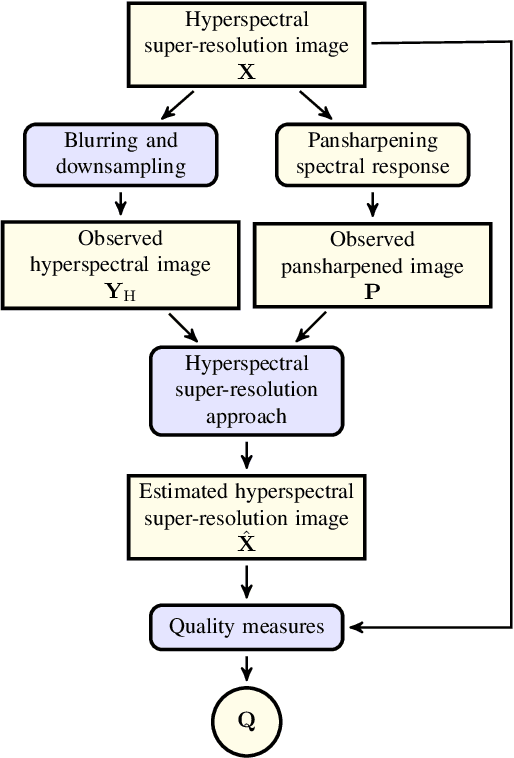Wenzhi Liao
Coupled Convolutional Neural Network with Adaptive Response Function Learning for Unsupervised Hyperspectral Super-Resolution
Jul 28, 2020



Abstract:Due to the limitations of hyperspectral imaging systems, hyperspectral imagery (HSI) often suffers from poor spatial resolution, thus hampering many applications of the imagery. Hyperspectral super-resolution refers to fusing HSI and MSI to generate an image with both high spatial and high spectral resolutions. Recently, several new methods have been proposed to solve this fusion problem, and most of these methods assume that the prior information of the Point Spread Function (PSF) and Spectral Response Function (SRF) are known. However, in practice, this information is often limited or unavailable. In this work, an unsupervised deep learning-based fusion method - HyCoNet - that can solve the problems in HSI-MSI fusion without the prior PSF and SRF information is proposed. HyCoNet consists of three coupled autoencoder nets in which the HSI and MSI are unmixed into endmembers and abundances based on the linear unmixing model. Two special convolutional layers are designed to act as a bridge that coordinates with the three autoencoder nets, and the PSF and SRF parameters are learned adaptively in the two convolution layers during the training process. Furthermore, driven by the joint loss function, the proposed method is straightforward and easily implemented in an end-to-end training manner. The experiments performed in the study demonstrate that the proposed method performs well and produces robust results for different datasets and arbitrary PSFs and SRFs.
Hyperspectral pansharpening: a review
Apr 17, 2015



Abstract:Pansharpening aims at fusing a panchromatic image with a multispectral one, to generate an image with the high spatial resolution of the former and the high spectral resolution of the latter. In the last decade, many algorithms have been presented in the literature for pansharpening using multispectral data. With the increasing availability of hyperspectral systems, these methods are now being adapted to hyperspectral images. In this work, we compare new pansharpening techniques designed for hyperspectral data with some of the state of the art methods for multispectral pansharpening, which have been adapted for hyperspectral data. Eleven methods from different classes (component substitution, multiresolution analysis, hybrid, Bayesian and matrix factorization) are analyzed. These methods are applied to three datasets and their effectiveness and robustness are evaluated with widely used performance indicators. In addition, all the pansharpening techniques considered in this paper have been implemented in a MATLAB toolbox that is made available to the community.
 Add to Chrome
Add to Chrome Add to Firefox
Add to Firefox Add to Edge
Add to Edge